Taming the Dragon
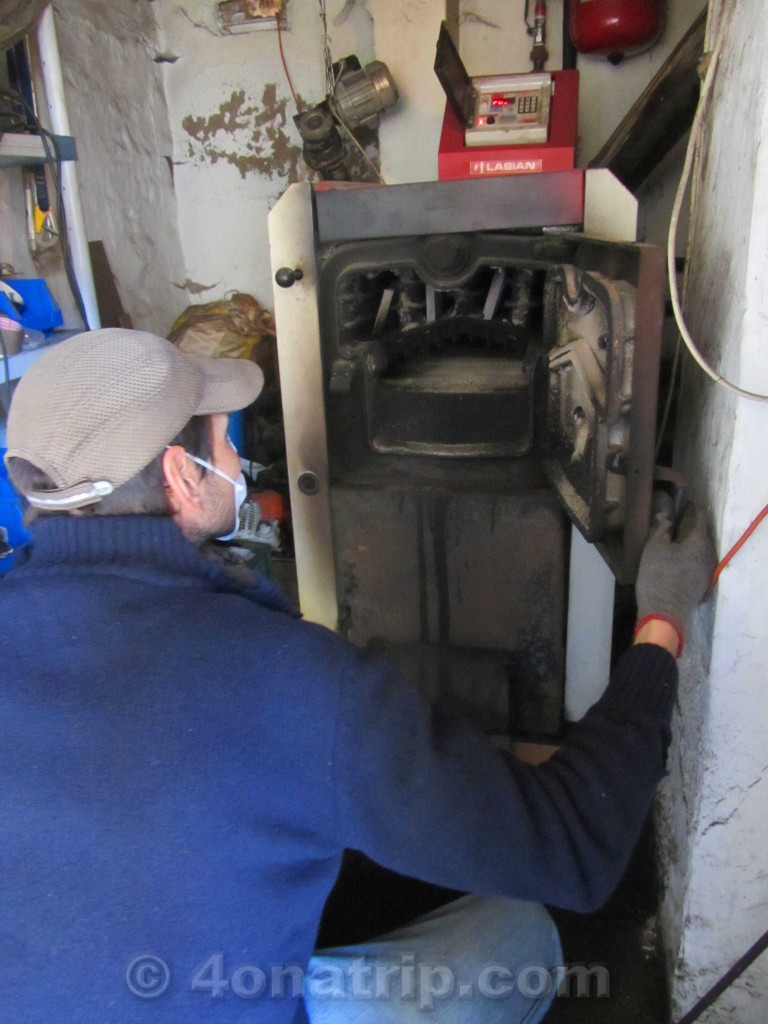
In southern Spain, we are in the heart of olive country and olive oil. This also means that there are a lot of olive pits (huesos) left over. So there is a type of furnace that is common in these parts that burn olive pits for fuel. Where we are staying, we have this type of furnace.
Olive Pit Furnaces in Spain
In concept, it is a great idea. In application, they can be a bit fiddly. I affectionately refer to my visits to clean and maintain the stove as going to tame the dragon.
There is an auger driven feed system from the pit storage area to the furnace. With our system, the pits feed up one pipe from the storage room into the furnace room. The pits then drop through a PVC pipe into another auger driven pipe, then into the furnace.
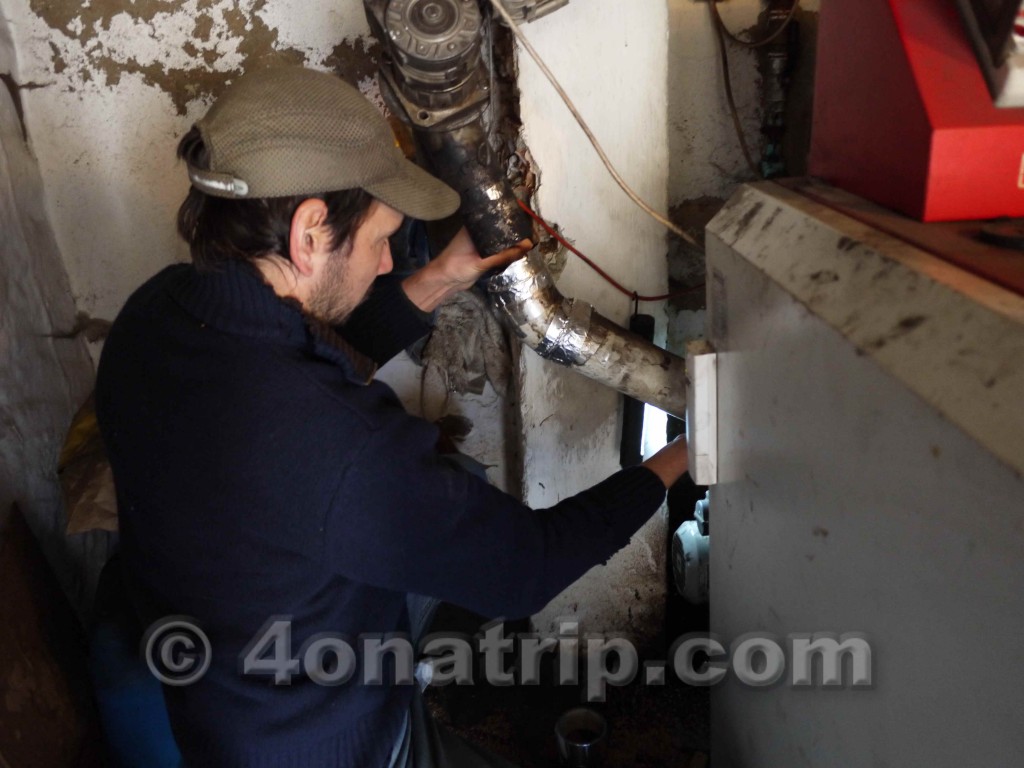
Once in the furnace, there is a pan that holds the burning seeds, and a blower to keep the air circulating for a high burn rate. When it is running, there is quite a bit of flame and it really heats up.
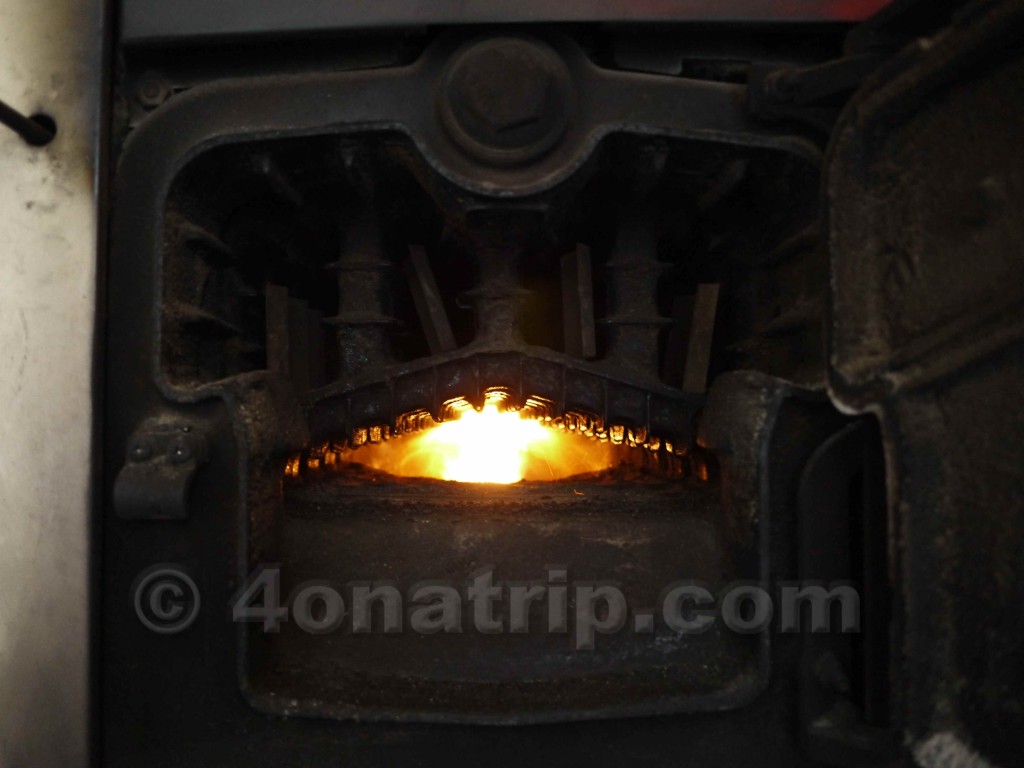
The heat comes from water and radiant heaters throughout the house. They are individually controlled, and can really put out the heat.
Every day, I go out to shovel more pits from the end of the storage room towards the auger. If you don’t do this, you will run out of seeds at the auger. The stove then goes out. The problem is, this is not the only way the stove loses its fuel.
Rocks in the auger
Rocks. I have come to despise them. The pits seem to have all kinds of rocks mixed in with them at times. Sometimes they make it through the auger, often times they jam it up. Needless to say, I have torn the feed system apart over a dozen times to clear up jams.
My first experience with a jam was quite comical. I knew the auger must be jammed so I dutifully shoveled all of the olive pits away from the feed system in the seed room. This took me about one hour of hard labor. I couldn’t find the jam, so called the property manager. He came right over, and went straight into the furnace room. I told him I shoveled all the seeds away from the auger to make it easier for him to fix. He looked at me like I was crazy. Then he disassembled the feed system in the furnace room, cleared the jam, and put it back together.
Of course, the jam was going to be at the end of the auger, not the beginning. I then got to shovel all the seeds back to where I took them from. Lesson learned. I have now come up with a quick method of determining where the jam is, so that I can repair it much quicker.
Luie the Big Helper
Luie loves to help me haul the pits. One time I did it without him knowing, and he got upset, wondering why I didn’t need his help that time. His favorite part is pushing the wheelbarrow back to the pit pile.
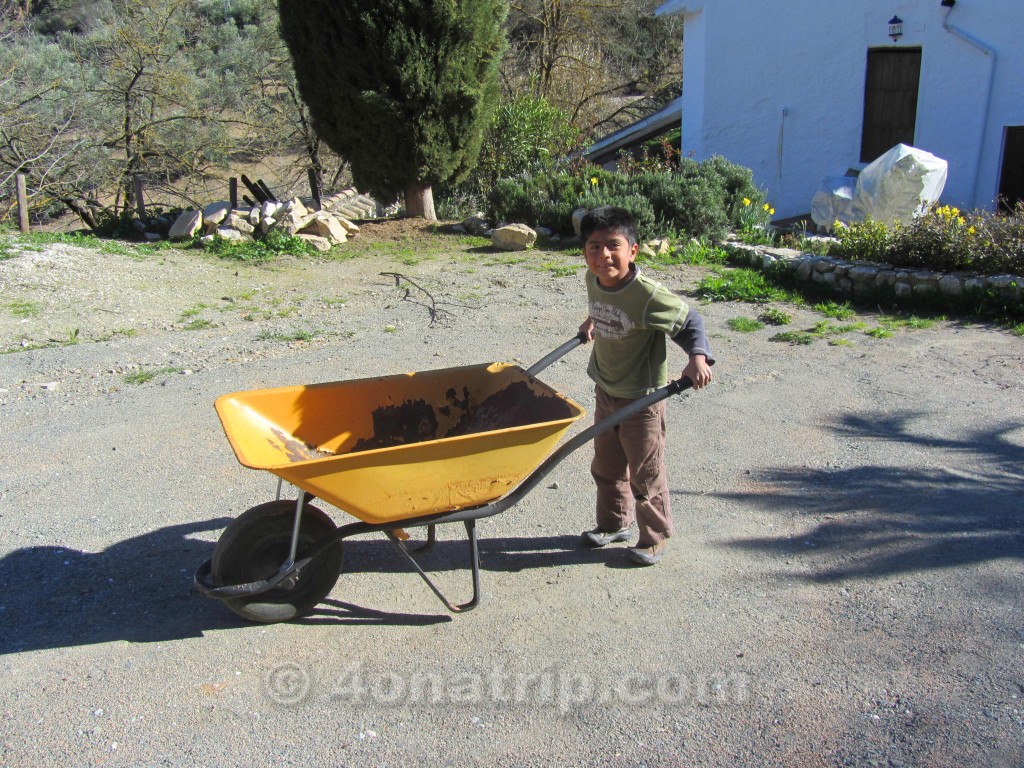
The pits look a lot like wood pellets, for those familiar with wood pellet stoves.
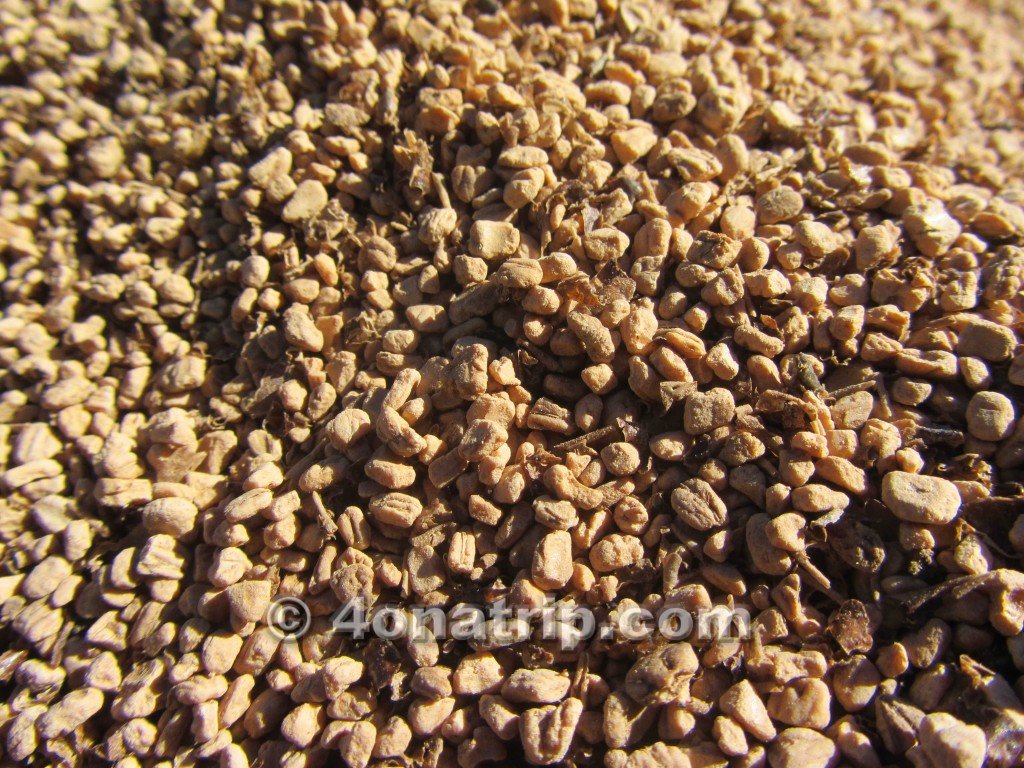
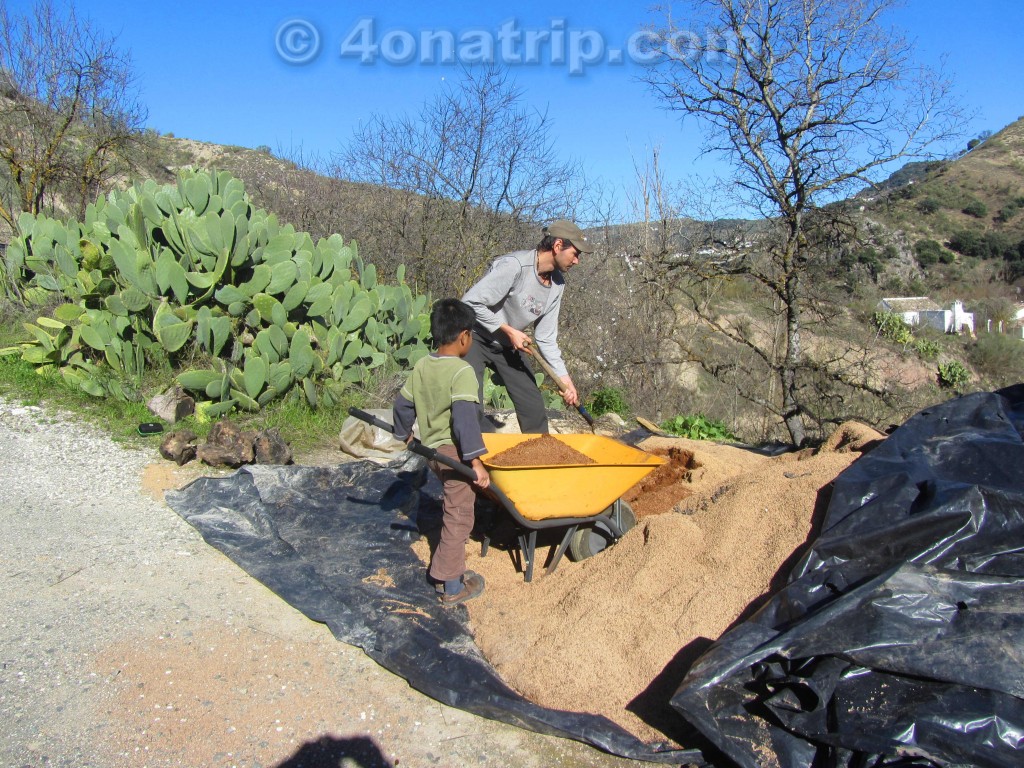
Luie and I fill the wheelbarrow, and haul them over to the seed room. It takes A LOT of loads to fill that room up.
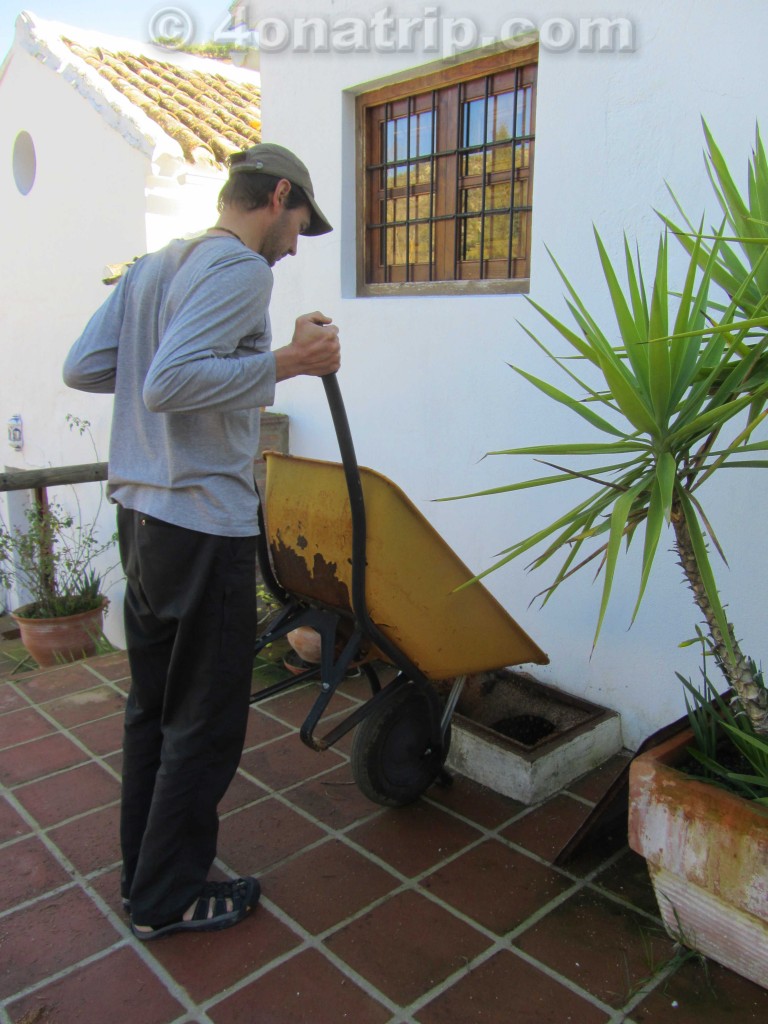
There is a shoot outside of the seed room that I can dump the loads into.
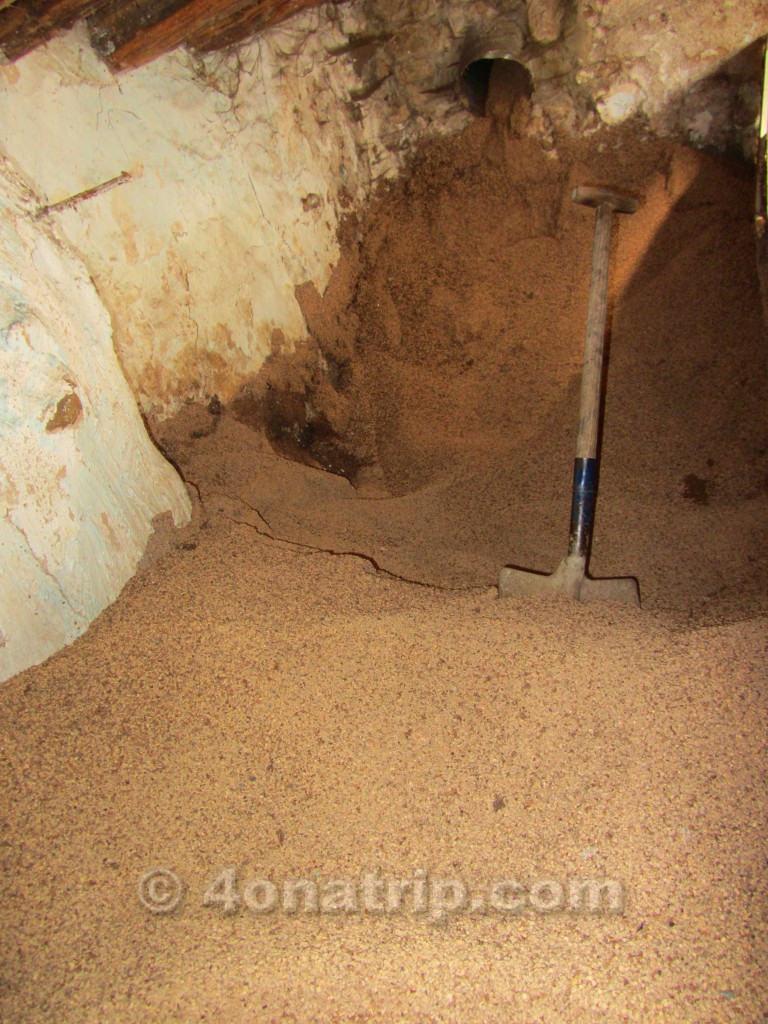
Once they are in the room, I shovel them towards the auger, then get more loads. It takes a while, but Luie loves doing it.
It is a really fascinating way of heating around here, with a readily available and fairly inexpensive fuel supply. It addresses both the need for heat, and the need to dispose of the olive pits.
A little refinement on the furnace system, and I think they would be a great way to heat.

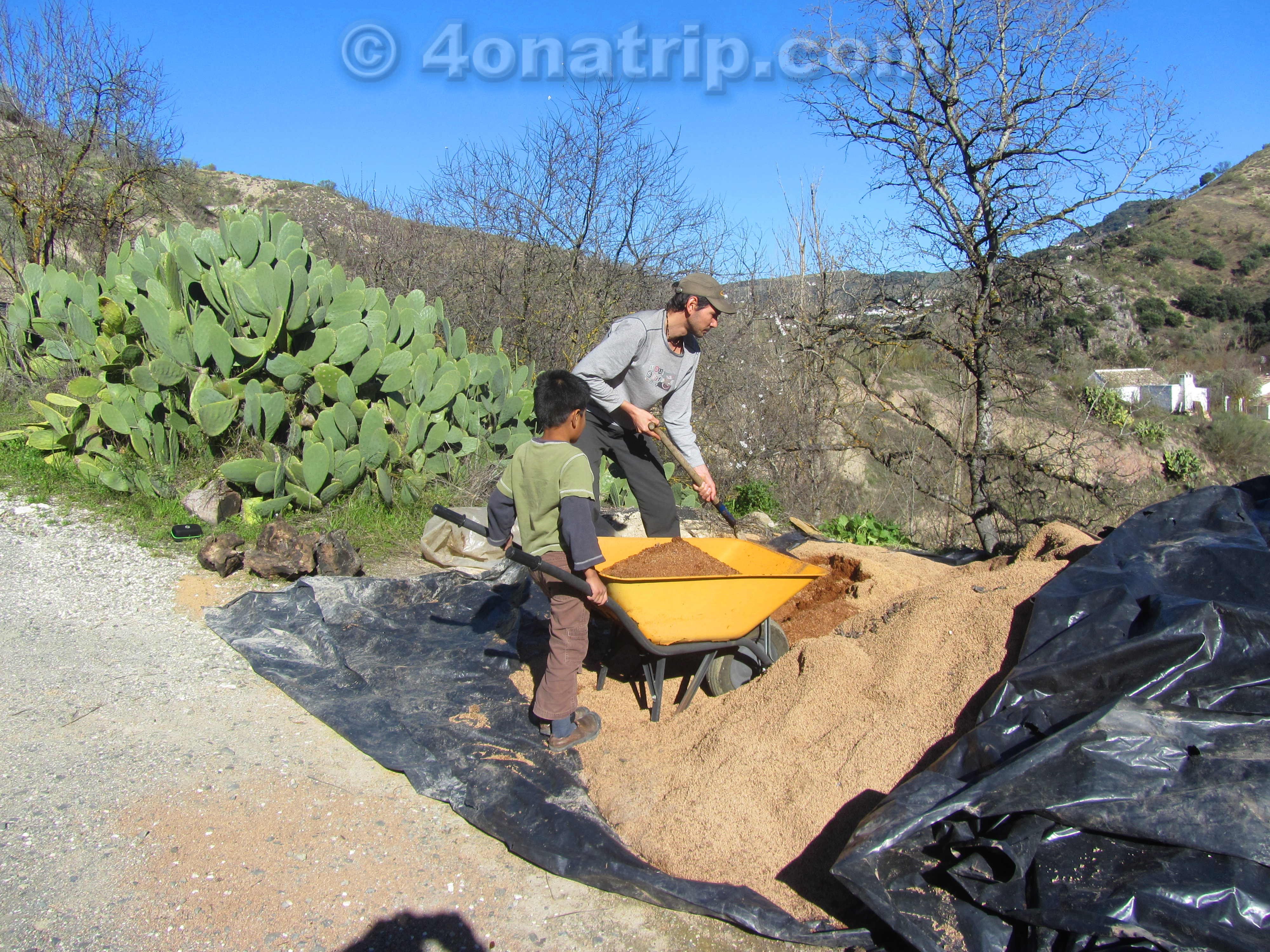

Great post, Dave. I remember filling our coal bin and shoveling coal into the hopper in Cheney in the 90s before we switched to natural gas. I loved hearing the auger sending coal into the furnace. the basement was always toasty warm with the coal furnace. I’m glad you’ve got a great helper there.
I love hearing the auger sending the seeds into the furnace also. Unfortunately, I had to tear the feed system apart two times today to hear it running again. It really is an economical system though, and a win for the environment when you consider all the olive seeds that would have to be dumped somewhere otherwise. Luie really does love helping with the furnace.
Hi Dave,
Down here in Australia we sell multi-fuel stoves and produce a crushed olive pit fuel as well. We too don’t like the rocks so as part of our process we have a destoning machine which separates all the particles by weight sending the heavy stones (to even smaller size than the pits) one way and the pits the other.
I see by your photos that your furnaces can handle pits to a high moisture level, our units are smaller and less forgiving so it is necessary to also dry the pits before packaging.
There is a bit of work in all this but I agree with you that the pits make a great fuel source and it is much better to use them rather than letting them rot in giant heaps in the countryside.
Cheers,
Darron.
Hi Darron,
While we were in Spain, I always felt there was great potential if they just processed their pits better. Sounds like you have come up with a great system to make it work. Our neighbors had a smaller, newer stove than ours and although I had problems with the moisture, their stove wouldn’t even run.
Having the pits cared for the way you do in Australia, I would love having a multi-fuel stove. I would definitely recommend that system for heat with dried and rock free pits.
Cheers,
Dave